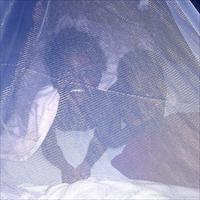SOUTHERN AFRICA: WHO warns of high levels of malaria

The World Health Organisation (WHO) is warning of the possibility of above average malaria transmission levels in the region this season prompted by unusually high wet conditions because of the climate phenomenon called La Niña.
"Malaria is a climate sensitive disease and for this time of the year we have experienced uncommonly heavy rainfall and flooding in parts of southern Africa," said Joaquim Da Silva, WHO's Malaria Epidemics & Emergency Officer in the region.
La Niña is characterised by unusually cold ocean temperatures in the eastern equatorial Pacific Ocean, recorded every three to four years, which causes a ripple effect felt across the globe, making wet regions wetter and dry ones even drier.
As a result of La Niña's impact, which lasts for nine to 12 months, rains were unusually heavy in parts of eastern Africa in 2007.
The Southern African Development Community (SADC) Drought Monitoring Centre's latest report said a La Niña event was now well established and has forecast heavy rainfall for Angola, Zambia, northern Zimbabwe, Malawi, northern Mozambique, southern Tanzania and the southern coast of Madagascar until February.
"We are watching out for possible flooding in the river systems of the Zambezi [Angola, Zambia, Zimbabwe, Mozambique], Okavango [Angola, Nambia, Botswana], Limpopo [South Africa, Zimbabwe and Mozambique] and the Pungwe [Zimbabwe and Mozambique] in the region," said Da Silva. Seasonal flooding was common in these river systems, but this year the impact could be severe, he added.
"We are watching the situation; no epidemics have been reported yet," said Da Silva.
The WHO has asked countries in the region to distribute insecticide treated nets, ensure anti-malaria drugs were available in health facilities and organise social mobilisation to raise awareness about the high transmission levels expected this season.
WHO was particularly concerned about parts of the region where seasonal or epidemic malaria was common such as parts of Angola, Zimbabwe, South Africa and Madagascar, as adequate protective immunity may never build up and could lead to a number of deaths, said Da Silva.
In endemic areas, such as Mozambique with high levels of transmission, newborn children, who are protected in their first months of life by the antibodies of their immune mothers, could be more vulnerable.
Malaria is the second leading cause of deaths in southern Africa and kills an average 400,000 people every year in the SADC region.
 Back and Next - Back and Next
Back and Next - Back and Next See Also - See Also
See Also - See Also